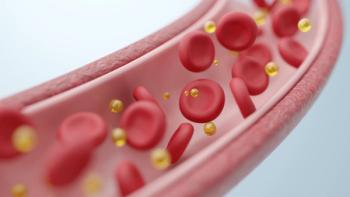
Fingolimod Shows Superior Results in Reducing Multiple Sclerosis Relapses
Fingolimod (Gilenya) found to significantly reduce the annualized relapse rate compared with glatiramer acetate among patients with relapsing-remitting multiple sclerosis.
Fingolimod (Gilenya) outperformed glatiramer acetate (Copaxone) treating patients with relapsing-remitting multiple sclerosis (RRMS) by significantly reducing the annualized relapse rate compared with glatiramer acetate.
In the phase 3b ASSESS study, patients treated with fingolimod .5 mg had a 40.7% relative reduction in the rate of relapses over a period of one year, compared with glatiramer acetate (annualized relapse rate [ARR] estimates .153 vs .258, respectively P = .0138).
"ASSESS is the first controlled head-to-head study of a MS disease modifying therapy versus Copaxone to show superior efficacy in reducing relapses, a key measure of disease activity and a significant burden for patients," said Bruce Cree, MD, PhD, MAS, George A. Zimmermann Endowed Professor in Multiple Sclerosis at the University of California San Francisco, and ASSESS Principal Study Investigator
Participants in the rater-blinded and dose-blinded study (n = 1064) were randomized to receive either once-daily oral fingolimod .5 mg (n = 352) or .25 mg (n = 370), or once-daily injections of glatiramer acetate 20 mg (n = 342). Novartis began the ASSESS study in patients with RRMS in 2012 as part of a post-approval agreement with the US Food and Drug Administration.
Although the risk reduction was significant among patients receiving fingolimod .5 mg, patients receiving .25 mg doses did not have statistically significant reductions in the annualized relapse rate compared to placebo.
Fingolimod is approved by the FDA for the treatment of relapsing forms of MS for patients ≥10 years of age. The .5 mg dose is approved for patients ≥10 years of age weighing >40 kg, while the .25 mg dose is approved only for pediatric patients weighing ≤40 kg.
The
"Gilenya reimagined MS care as the first oral treatment and is a testament to Novartis' quest to stop MS," said Danny Bar-Zohar, MD, Global Head of Neuroscience Development, Novartis Pharmaceuticals. "The ASSESS data add to the robust body of evidence which show that Gilenya is a highly efficacious, cornerstone therapy in relapsing MS."
A version of this article was originally published by
Newsletter
Stay informed on drug updates, treatment guidelines, and pharmacy practice trends—subscribe to Pharmacy Times for weekly clinical insights.

















































































































































































































